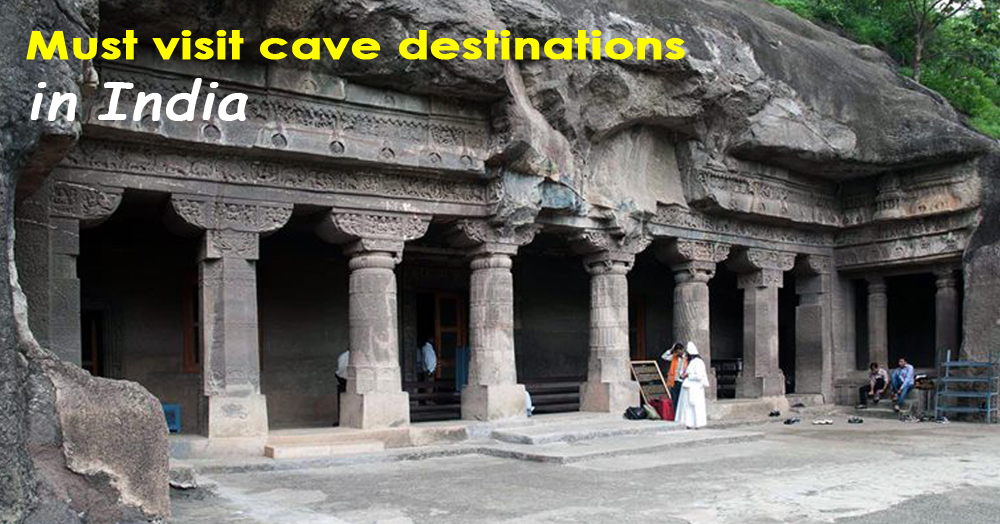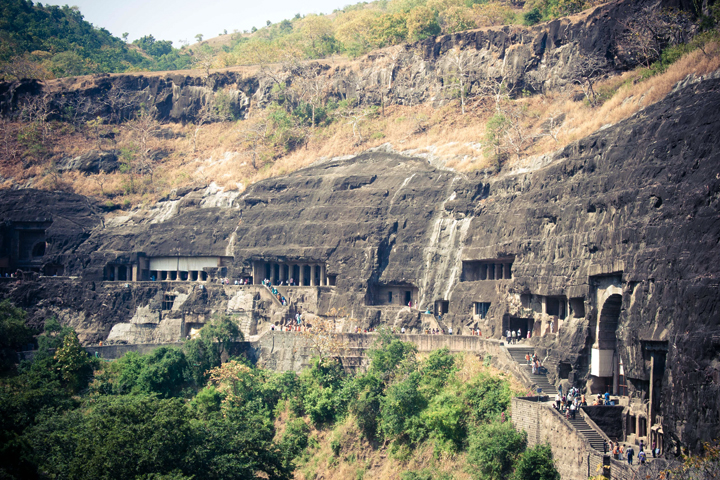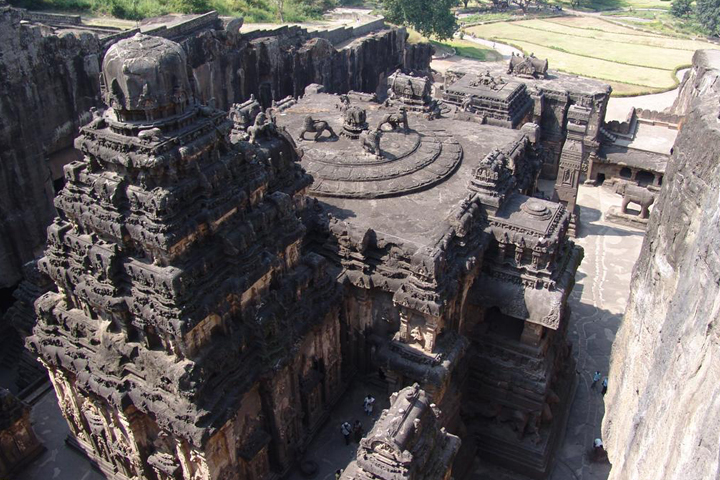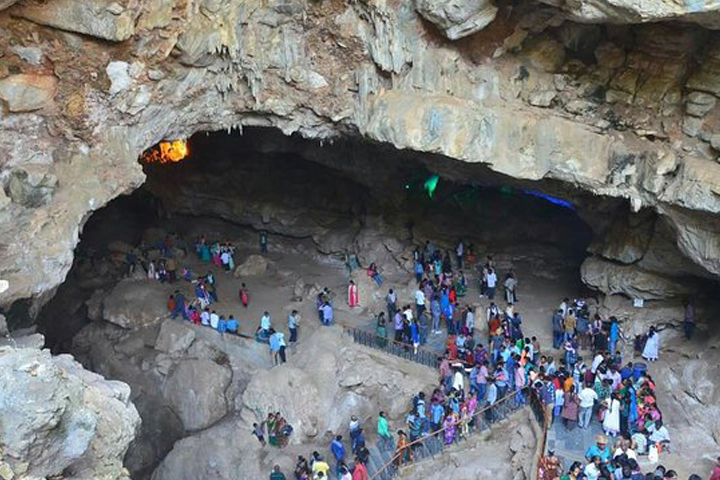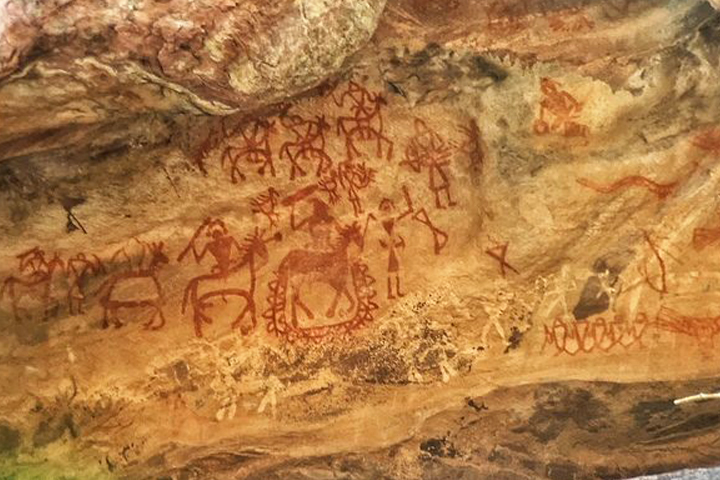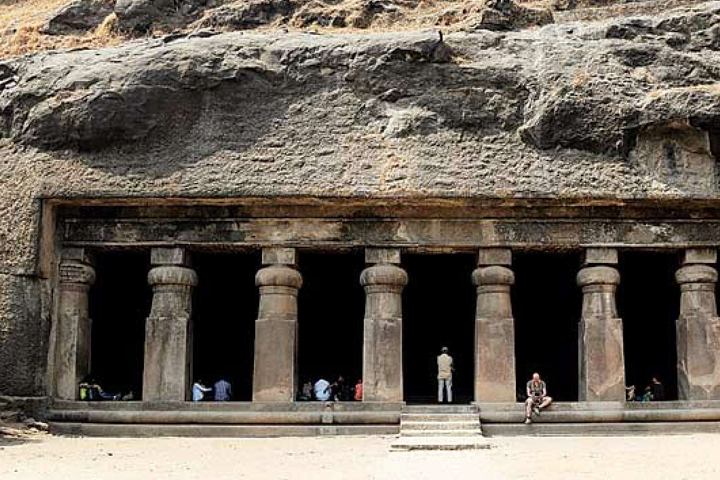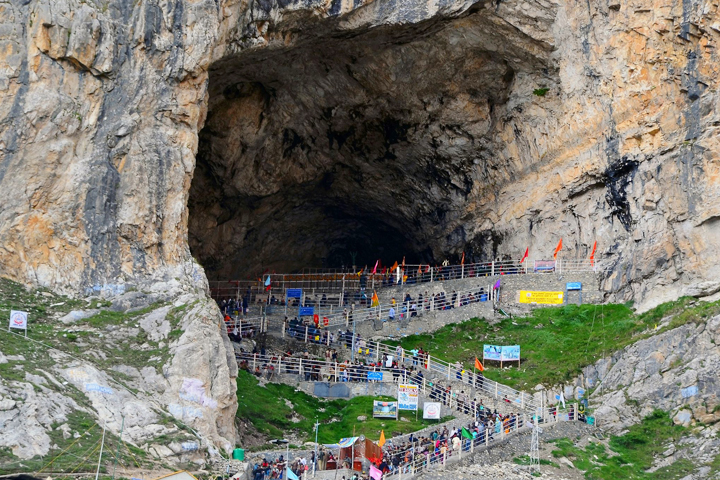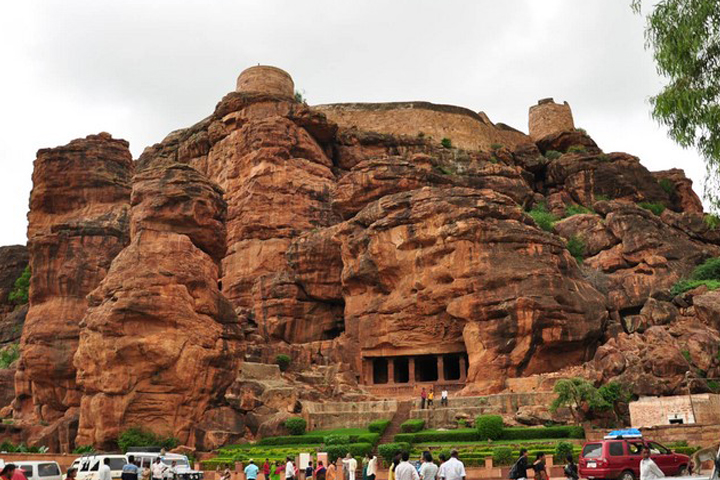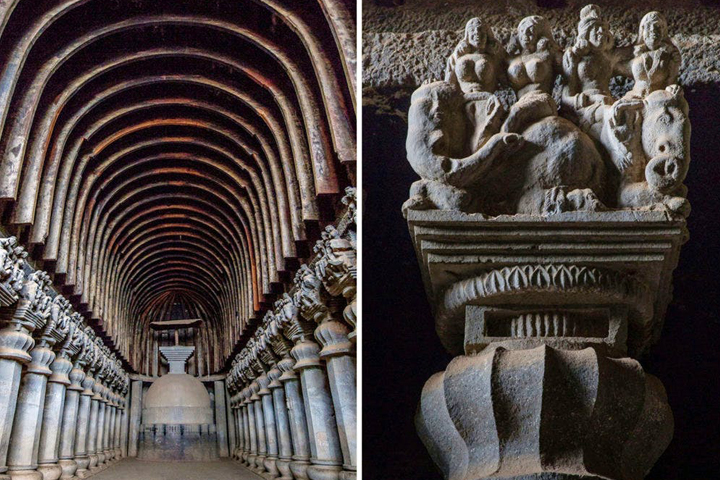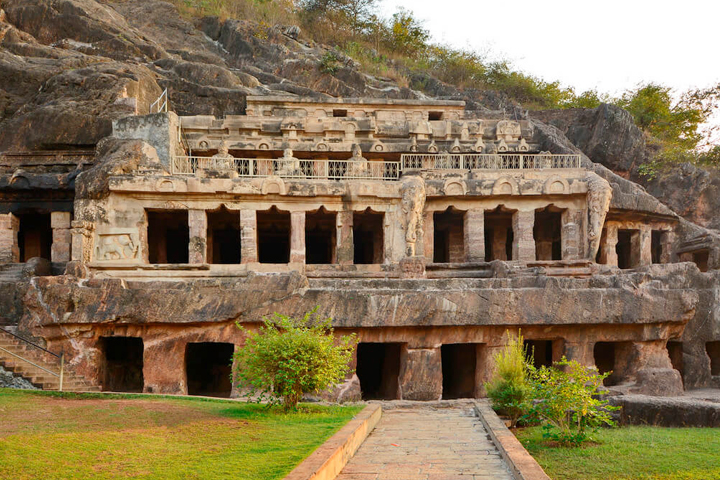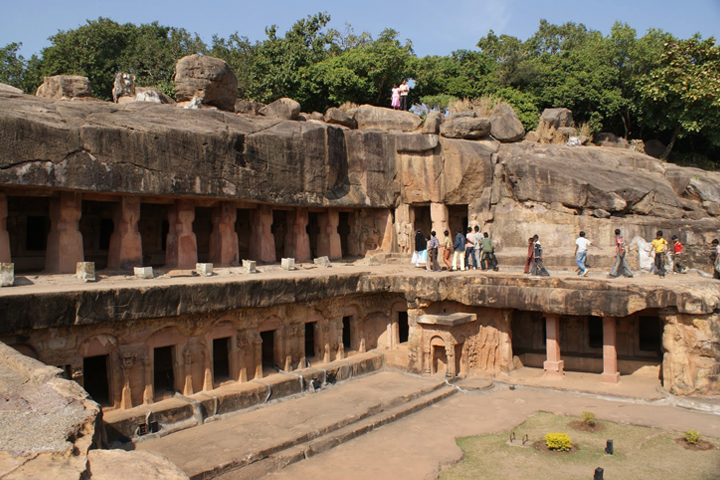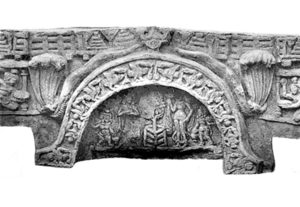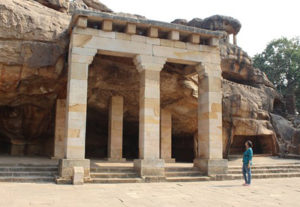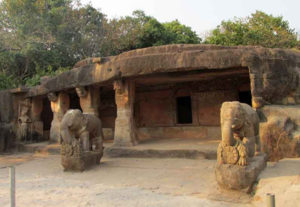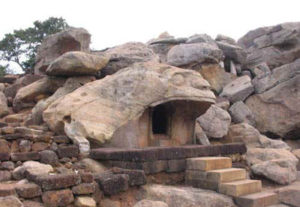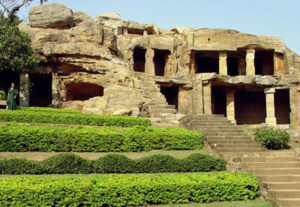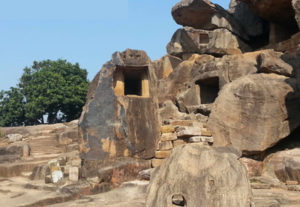Must visit cave destinations in India [Preserving the laws of nature]
The narrow turns| the distinct featured roof| the uncommon silence| the charcoal shaded darkness| the mystical formation and the list is so on – country India is dotted with numerous destinations safeguarding the presence of cave lands.
Introduce yourself with some of the caves, which back in days served as a place of meditation for the followers of monkhood [a religious way of living] and some are followed by the religious significance.
[Be aware of the cave insects]
A formal definition of a cave – A cave is a hollow place in the ground acquiring a natural space large enough for supporting human presence. The formation of caves is sourced by natural influence – bring into being by the weathering of rock and stretching deep underground. To add more detail – the formation and further development of caves are termed as Speleogenesis, which can take place over the millions of years.
In the time-worn days – the cave lands served more like a shelter home; the saints and Monks used to live in these caves for years [involved into common activity – Meditation] – they use to travel time and again in search of a purposeful life.
Plan a trip to India with your friends and family and explore the natural creations acquiring a significant presence in the landscape justifying and quoting the finest of country India.
Here are the names of some really amazing caves situated in the arms of country India:
Be a part of this impressive backdrop among which some are the natural creations and some are carved out of belief [ when faith and the law of nature walks hand in hand]
1- Ajanta caves [Aurangabad] [cave destinations in India]
Ajanta Caves [UNESCO declared World Heritage Site] – There are nearly 29 rock-cut Buddhist Cave monuments which reflect the time of 2nd century BCE to about 480 CE in the arms of Aurangabad District in the state of Maharashtra. The caves are well-decorated with really imposing rock-cut Sculptures and Paintings defining as among the finest surviving examples of Great ancient Indian Art [signifying the presence of artistry], particularly the painting exhibiting various expressions and emotions through pose, form and gesture.
2- Ellora Caves [Aurangabad] [cave destinations in India]
Ellora Caves [UNESCO declared World Heritage Site] – Another place of importance – considered as one of the largest rock-cut monastery temple cave complexes in the World portraying the artwork and monuments of three eminent religions [Hindu, Buddhist and Jain] dating from the 600-1000 CE period. Make your way to the Aurangabad district relaxing in the arms of Maharashtra and while exploring this wide-spread cave complex make sure to reserve some quality time in order to explore the Kailasanatha Temple at cave 16.
Suggested Tours – Mumbai Aurangabad Weekend Tour
3- Borra Caves [cave destinations in India]
Follow a map that directs you to the East Coast of nation India
While traversing through the finest attractions of country India – do make sure to land at a cave destination that was discovered in year 1807 by William King George of the Geological Survey of India. The Borra caves are situated in the Araku Valley of the Ananthagiri Hill Range and are drained by the river named as Gosthani.
The Borra Caves are also addressed as Borra Guhalu [the derivation of this name is simply straight – Bora means hole as per the Odia Language and Guhalu denotes as caves in the Telugu language. This place of importance drives more footfalls in the Visakhapatnam district of the state of Andhra Pradesh. The caves display a formation that is beyond one’s imagination – you will get to explore the Karstic limestone structures stretching to a depth of 80 Meters and this is what makes it the deepest caves in India.
Worship of Stalagmite Lingam is done in the vicinity of Borra Caves| you can also please your eyes with a mystical view of the enticing valley situated in the encircling region of this cave etc.
4- Bhimbetka Rock Shelters [cave destinations in India]
Be a part of this ever-lasting interaction between the people and the landscape that is shared by the artistry done in the Bhimbetka Rock Shelters – pay a visit to this cave land that is declared as a World Heritage Site by UNESCO. The Bhimbetka Rock Shelters are an archaeological site situated in the heart of India that stretches the prehistoric Paleolithic and Mesolithic periods as yes the historic period as well. This place of significance portrays the earliest traces of human life on the Indian subcontinent and it also acquires the evidence of Stone Age beginning at the site in Acheulian times. This wondrous place comprises of seven hills and over 750 rock shelters spread over the distance of 10 Kilometers. Grab an opportunity and get a “rare glimpse” into the human settlement and cultural evolution from the Hunter-gathers to agriculture and then to the expressions of spirituality.
One can spend hours exploring the fine details carved on the surface of these shelters; infact the Bhimbetka rock Shelters also present prehistoric cave paintings and the earliest for about 30,000 years old. You can please your eyes with an impressive sight of quirky painting of animals| images portraying the art of dance and hunting. Country India is dotted with various wondrous destinations – Bhimbetka Rock shelters are one of them [it acquires the oldest known rock art in the Indian Subcontinent and one of the largest prehistoric complexes as well].
Suggested Tours – South India Heritage Temple Tour
5- Elephanta Caves [cave destinations in India]
Set the wheels in motion and place your presence at a UNESCO recognized World Heritage Site [Elephanta Caves] – it’s a set of cave temples primarily devoted to the Hindu God Shiva.
This collection of cave temples is located on the Elephant Island also referred as Gharapuri [the city of Caves] in Mumbai Harbour [merely 6.20 miles to the east of the city of Mumbai in the state of Maharashtra]. It’s adorned with the Shaivite caves and a few Buddhist stupa mounds. The creativity or say the carvings narrate Hindu mythologies with the huge monolithic 6.1 meters Trimurti Sadashiva [three-faced idol of Lord Shiva]| Yogishvara [the lord of Yoga] and Nataraja [the lord of Dance] being the most celebrated. The past of these caves is really captivating – the derivation of its name is also unique [earlier they were addressed as Elefante – which transformed into Elephanta by the Colonial Portuguese when they discovered the statues of elephant on it. Explore the main Mandapa and pillars| the wall carving exhibiting the act of Lord Shiva bringing Ganges River to earth| the Trimurti Shiva bound by the Dvarapalas| the carving of Ardhanarishvara| the surface depicting Kalyanasundara [wedding of Shiva and Parvati etc.
6- Amarnath Cave Temple [cave destinations in India]
Join your hands in prayer and step into the spiritual land of Amarnath Cave – a Hindu Shrine situated in the state of Jammu and Kashmir. The sacred cave is located at an elevation of 3,888 meters – accessible from the largest as well as the summer capital of this state [SRINAGAR] [you would have to cover a distance of approximately 141 Kilometers].
The shrine creates an important part of Hinduism and is also considered as one of the holiest shrines in Hinduism – bounded by snowy mountains. Most of the time of the year this cave is completely covered with snow except for a short duration of time in summer [the only time when it’s open for devotees]. Hundreds of Thousands of Hindi Pilgrims make an annual pilgrimage to the sacred Amarnath cave across challenging and demanding mountainous terrain. Bow down and join your hands in front of the ice lingam [the linga inside the 130 feet high Amarnath cave – a stalagmite is created due to the freezing of water drops that fall from the roof of this striking cave on to the floor and stretched up vertically from the cave floor. While climbing the heights do make sure to embrace the charm of Amarnath Valley.
Suggested Tours – Amarnath Yatra by Road
7- Badami Caves Temples [cave destinations in India]
In the name of God – The Badami Cave Temples are a complex of a Jain, four Hindu and possibly Buddhist cave temples situated in Badami [a town located in the Bagalkot district of the state of Karnataka]. The remarkable caves are considered an example of Indian Rock-cut architecture displaying the importance of spiritualism. It highly projects the grace of Badami Chalukya architecture, which dates from the days of past [6th Century]. Badami was previously addressed as Vataapi Badami [the capital of the Early Chalukya dynasty, which governed much of Karnataka beginning from the 6th to 8th century].
The town of Badami is situated on the west bank of a man-made lake encircled by an earthen wall with stone steps; this lake is bordered on the north and south by the Forts built in future dates. The Badami Cave temples reflect some of the earliest well-famed examples of Hindu Temples in the Deccan region. Cave 1 to 4 is in the escarpment [steep slope] of the hill in soft Badami sandstone formation, to the south-eastern region of the town. Take a closer look at the image of Nataraja or Dancing Shiva in the vicinity of cave 1. Do make sure to spend some quality time at the cave 3 as it’s ornamented with a striking image of Lord Vishnu. And cave 4 is totally devoted to Jainism [dotted with various revered figures].
8- Karla Caves [cave destinations in India]
A cave complex gifted with various names – Karla Caves| Karli Caves| Karle Caves or Karla cells. Make your way to this great piece of art; the Karla caves are a complex of ancient Buddhist Indian rock-cut caves situated near Lonavala in the state of Maharashtra. The shrines were built over the period – starting from the 2nd century BC to the 4th Century AD [the event of development took a lot of time]. The oldest of the cave shrines is believed to relate back to 160 BC [situated close to the major ancient trade route – leading eastward from the Arabian Sea into the Deccan.
Spend some time witnessing the great Chaitya [the largest and thoroughly preserved” Chaitya hall of the period] at the province of cave 8 [one of the well-famed caves located in this complex]. The group of caves at Karla is one of the smaller and older of the numerous rock-cut Buddhist spots in Maharashtra. The Path leading towards the Karla Caves is surrounded by a thick sheet of greenery [truly mesmerizing].
Suggested Tours – India Temple Tours
9- Undavalli Caves [cave destinations in India]
The wondrous land of country India is ornamented from every corner, speaking of which such is this cave land – addressed as Undavalli [a monolithic example of Indian rock-cut architecture]. It’s one of the finest testimonials or reference originator to the ancient Viswakarma sthapathis that are situated in Undavalli of Guntur district in the state of Andhra Pradesh. The Undavalli caves are one of the centrally protected monuments of national importance – easily accessible from Vijaywada [6 Kilometers to the South West]. These caves are said to be discovered in the 7th century [the time it regained its identity] – once belonged to the Vishnukundi Kings of 420 to 620 AD. The Undavalli Caves are devoted to Anantha Padmanabha and Lord Narashimha [the Buddhist Monks treated this place as a place of relaxation].
These commendable caves were carved out of solid sandstone on a hillside in the days of 4th to 5th centuries AD. The well-known largest cave in this complex acquires four stories with a huge recreated statue of Lord Vishnu in a reclining position – made out of a single block of granite preserved inside the second floor. The only mode to reach out to this cave complex is via road – make your way to this imposing four storey-rock cut temple adorned with east facing façade, which is 29 meters long and 16 meter wide. Every floor differs in the aspect of depth – the ground floor is an unfinished low pillared hall complemented with 8 pillars and 7 door openings in the front region.
Pay a visit to this attention seeking destination standing tall in the state of Andhra Pradesh.
10- Udayagiri and Khandagiri Caves [cave destinations in India]
Udayagiri and Khandagiri caves – earlier known as Cuttack or Katak caves are partially artificial and partly natural [humans walking hand in hand with the laws of nature] of archaeological, religious and historical significance situated close to the city of Bhubaneshwar in the state of Odisha [both the caves are situated on the adjacent hills – multiplying great level of charm and grace to this happening state]. These cave lands acquire a number of well-ornamented carved caves constructed during the period of 2nd century BCE. It’s highly believed that most of these caves were made out as residential blocks for the Jain monks during the ruling period of King Kharavela. The Khandagiri is gifted with 15 caves wherein the Udayagiri [which means “Sunrise hill” is embraced with 18 caves. The most significant of this wide group is Ranigumpha situated in Udaygiri, which is a striking double storeyed monastery.
Here are the names of some other prominent caves: Ananta Gumpha| Hathi Gumpha| Ganesha Gumpha| Bagh Gumpha| Jaya Gumpha and Sarpa Gumpha. Make sure to spend some more time exploring the Cave of the queen “Rani Gumpha” – the largest and well-famed cave among the various caves of Udayagiri and Khandagiri.
Ananta Gumpha Hathi Gumpha
Ganesh Gumpha Bagh Gumpha
Nearly every region of country India is unique in some or the other aspect – to be a part of some or say to fit in a perfect frame sharing the base of quirkiness’ run into the wide-spread arms of this magical nation.
Suggested Tours – Rajasthan Tours , India Adventure Tours , South India Tours
